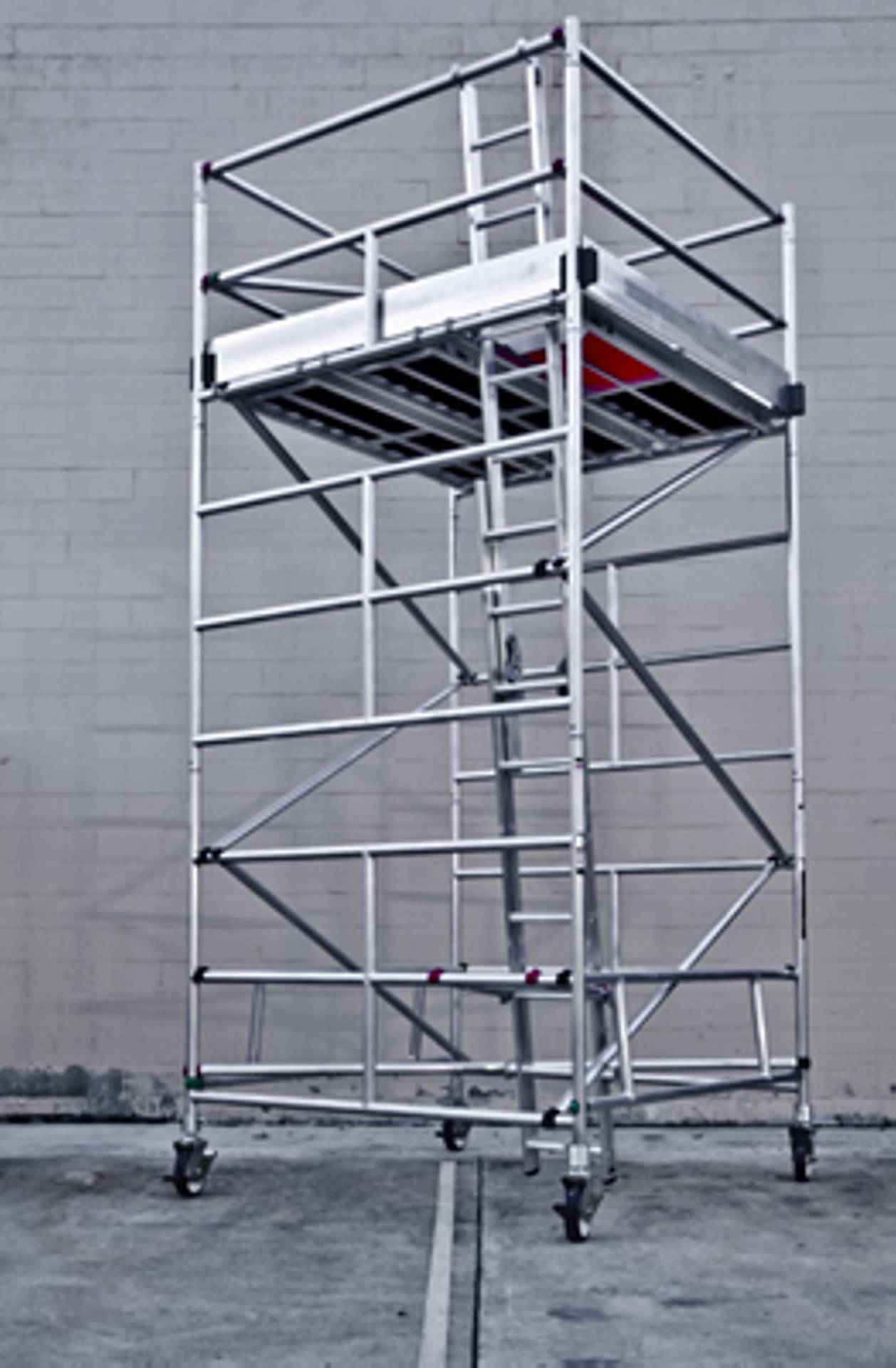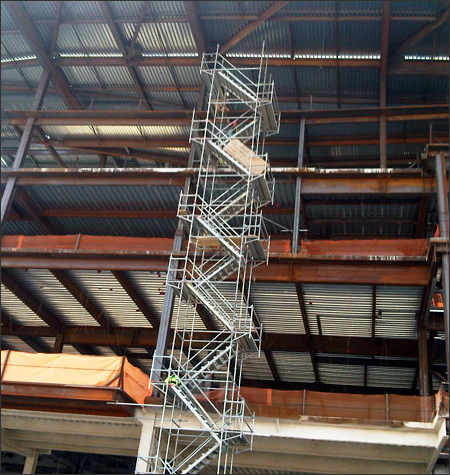Just How Scaffolding Adds To a More Secure Building And Construction Website
Scaffolding Hoists: Lifting Your Task to New Heights ====================================================
Scaffolding raises optimize product transportation, saving time and boosting efficiency on building websites. They replace manual lifting techniques, decreasing dangers and enhancing performance. Whether electric or hand-operated, raises deal different weight capacities and functional speeds. Safety measures such as safe add-on factors and harnesses are crucial. These hoists improve operations, promote elevation accessibility, and offer affordable solutions for various jobs. Appropriate setup and maintenance guarantee continual procedure and protect against breakdowns. Assess expenses, warranties, and safety attributes when choosing a hoist. Find out more concerning the benefits, types, safety measures, and applications of scaffolding lifts for your task's success.
Advantages of Scaffolding Raises
Scaffolding raises offer unequaled performance and safety and security when raising heavy materials to raised construction sites. The effectiveness advantages of using scaffolding hoists are evident in the streamlined procedure of transferring materials to various levels of a construction site with ease and precision. By using scaffolding hoists, building jobs can save valuable time and increase productivity by eliminating the demand for manual labor-intensive lifting techniques. This not just enhances efficiency but additionally ensures that products are moved quickly and firmly, decreasing the risk of crashes or damage during transportation.
Furthermore, scaffolding lifts add to considerable price savings by reducing the labor hours needed for product handling tasks. The use of hoists lessens the need for additional workforce, eventually minimizing labor prices. Additionally, the accurate and regulated movement supplied by scaffolding raises aids protect against product wastage and problems, conserving money on replacement materials. Overall, the efficiency and cost-saving benefits of scaffolding raises make them an indispensable tool for any type of building task intending to optimize operations and improve safety measures.
Types of Scaffolding Lifts
When taking into consideration sorts of scaffolding hoists, key aspects to evaluate consist of:
- Electric versus guidebook raises
- Raise weight capacity
These differences are necessary in determining the performance and performance of the raising equipment for different task needs.
Recognizing the distinctions in between electric and hands-on hoists, in addition to the weight capability they can support, is essential for picking the most ideal scaffolding hoist for a project.
Electric Vs Guidebook Hoists
An essential factor to consider when selecting a scaffolding hoist is picking between an electric or manual kind. Electric hoists are powered by electricity and are recognized for their effectiveness and ease of use. They are optimal for jobs that need constant training of hefty loads as they reduce manual work and boost efficiency.
On the various other hand, handbook hoists are operated by hand and are suitable for smaller sized projects or tasks that do not need continuous lifting. While manual hoists may be a lot more economical at first, electric hoists offer benefit and speed, especially for bigger building tasks. https://chelseascaffolding.co.uk
Ultimately, the option between electric and hands-on hoists depends on the particular requirements of the job relating to workload and spending plan.
Raise Weight Ability
One crucial factor to contemplate when selecting a scaffolding hoist is its weight capability, as this determines the type of tons it can securely raise. Comprehending the hoist's weight capability is essential for making certain the safety and security and efficiency of your job.
Below are 4 bottom lines to consider regarding hoist weight capacity:
Hoist Maintenance: Routine upkeep is essential to guarantee that the hoist runs at its finest ability and can securely raise the designated loads.
Weight Circulation: Appropriately spreading the weight of the load throughout the hoist guarantees that it can raise the load without surpassing its capacity.
Load Limitations: Be mindful of the maximum weight capacity of the hoist to avoid overloading and possible mishaps.
Safety and security Measures: Constantly follow the producer's guidelines and referrals for the safe use the hoist to avoid accidents or damage.
Precaution for Scaffolding Raises
When it comes to precaution for scaffolding hoists, two critical points attract attention – making sure protected add-on points and carrying out routine safety and security checks.
Protected attachment points are essential for the security and reliability of the hoist system, decreasing the danger of crashes or breakdowns.
Normal security checks aid to determine any type of possible concerns early on, enabling prompt maintenance and making sure a risk-free working environment for all entailed.

Protect Add-on Information
Ensuring the protected add-on points for scaffolding lifts is extremely important in preserving a safe workplace at elevated elevations. To achieve this, interest must be paid to particular facets:
Attachment Toughness: The add-on factors have to be capable of enduring the weight and forces applied by the hoists and the employees.
Safety belt: Workers must always be safely attached to the hoists via dependable harness.
Regular Examinations: Regular checks guarantee that accessory factors stay tough and dependable.
Correct Installment: Correct setup of accessory points by experienced professionals is important for safety and security. https://chelseascaffolding.co.uk/index.html
Normal Security Checks
Routine security checks are necessary for keeping the stability and reliability of scaffolding hoists in building jobs. Security examinations and appropriate upkeep routines are important parts to guarantee the risk-free operation of these lifting systems. Routine safety checks ought to be performed by qualified workers who comprehend the significance of determining possible dangers and addressing them promptly.

Furthermore, adherence to training and qualification requirements is critical to guarantee that the individuals running the scaffolding hoists are competent and well-informed regarding safety procedures. By integrating these measures right into normal safety and security checks, building and construction projects can mitigate risks, prevent crashes, and uphold the greatest criteria of safety and security on-site.
Appropriate maintenance and thorough security examinations are essential practices that contribute to the general success and safety and security of scaffolding lifts in building and construction settings.
Ideal Practices for Running Hoists
Sticking to safety and security protocols and maker guidelines is crucial when operating scaffolding lifts on building websites. To ensure the safe and effective operation of hoists, consider the following finest practices:
Routine Inspections: Conduct thorough safety evaluations prior to each use to check for any type of indications of wear and tear, making certain all elements remain in great functioning condition.
Proper Training: Make sure that all operators are sufficiently trained in the right procedure of the hoists to prevent crashes and injuries.
Weight Limitation Adherence: Always comply with the weight limits specified by the manufacturer to prevent overloading, which can bring about devices failure.
Emergency situation Procedures: Acquaint all operators with emergency shut-off treatments and procedures in instance of any kind of unpredicted occurrences.
Applications of Scaffolding Hoists
To totally leverage the capabilities of scaffolding lifts in building jobs, comprehending their varied applications is vital. Scaffolding hoists offer significant advantages in enhancing building effectiveness and supplying cost-efficient remedies.
By using hoists, building and construction groups can simplify the procedure of transferring materials and tools to various degrees of a building, ultimately saving time and labor costs. These hoists add to predict efficiency by helping with quick and risk-free material handling, allowing workers to concentrate on their jobs immediately.
In addition, scaffolding hoists enable height accessibility, making it much easier for workers to get to raised locations safely and effectively. Whether it's relocating heavy tons to greater floors or carrying workers to different levels of a building website, scaffolding hoists play an important function in ensuring smooth procedures.
Picking the Right Hoist for You
Picking one of the most appropriate hoist for your building needs involves thoughtful consideration of various aspects to guarantee peak performance and efficiency. When choosing a hoist, below are 4 necessary factors to take into consideration:
Setup Process: Try to find hoists that use simple installment procedures to minimize downtime and make certain fast setup for your task.
Maintenance Needs: Take into consideration the upkeep demands of the hoist to ensure smooth procedure throughout the task duration and prevent unforeseen break downs.
Price Considerations: Examine the initial price of the hoist in addition to lasting expenses such as repair and maintenance to establish one of the most affordable alternative for your project.
Guarantee Options: Discover the warranty bundles supplied with the hoist to secure your investment and give peace of mind in case of any unforeseen concerns. Selecting a hoist with a complete guarantee can save you from costly fixings in the future.
Frequently Asked Inquiries
Just How Often Should Scaffolding Hoists Be Examined for Upkeep and Safety And Security Checks?
Regular examinations of scaffolding hoists are critical for upkeep and safety. Sector requirements advise inspections at least every 30 days. Furthermore, making certain that staff get proper security training is important to stop accidents and maintain a protected workplace.
Can Scaffolding Raises Be Utilized in Extreme Climate Issues, Such as High Winds or Hefty Rain?
When pondering making use of scaffolding lifts in severe weather conditions, it is necessary to prioritize wind resistance and rainfall security. Executing emergency treatments and safety precautions is important to assure the well-being of employees and the integrity of the tools.
Exist Weight Limitations for the Materials That Can Be Lifted Utilizing Scaffolding Hoists?
Weight restrictions are important factors in making sure the safe procedure of scaffolding raises. Adhering to safety and security policies, these hoists have certain weight constraints for materials to be lifted. Compliance with these standards is important for a secure workplace.
What Sort of Training or Qualification Is Needed to Run a Scaffolding Hoist?
To run a scaffolding hoist, people must undergo ideal training and certification to guarantee adherence to precaution. This training covers tools procedure, tons abilities, assessment procedures, and emergency procedures. Adherence to these needs is essential for mishap avoidance.
Exist Any Kind Of Specific Rules or Standards That Required to Be Followed When Utilizing Scaffolding Lifts on Building Websites?
Laws compliance is crucial when utilizing scaffolding hoists on building and construction sites. Adherence to security preventative measures outlined by appropriate authorities is essential to assure a safe and secure working environment. Routine assessments, proper training, and following standards are crucial components.
Conclusion
To summarize, scaffolding hoists deal many advantages for raising jobs to new elevations. By comprehending the various kinds of hoists readily available, executing safety measures, adhering to finest techniques, and choosing the proper hoist for the work, construction and upkeep projects can be finished more successfully and securely.
Making use of scaffolding hoists can improve efficiency and assurance that tasks are completed with accuracy and accuracy.